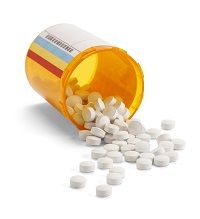Article
Opioid Prescriptions Do Not Improve Physical Function
Author(s):
Neuropathic pain patients who are not prescribed opioid medications (such as morphine, codeine, and Tylenol 3) may experience more improvements in physical function.

Neuropathic pain patients who are not prescribed opioid medications (such as morphine, codeine, and Tylenol 3) may experience more improvements in physical function, according to a study published in Pain Medicine.
Researchers from the University of Alberta evaluated data from patients in order to assess the link between opioid dosage and ongoing therapy with physical function and disability in patients with neuropathic pain. The researchers used data collected about the patients’ 12 month self reported physical function, baseline opioid dose, ongoing opioid use, potential confounding factors like age, sex, baseline pain intensity, and psychological distress to examine the patients. A total of 789 patients that were treated for various neuropathic pain diseases were include in the overall study, but measures from 535 patients were used in the analysis.
Physical function and disability did not improve in patients with neuropathic pain in the group of patients that were prescribed opioids, versus patients not prescribed opioids, the researchers learned.
“Even though opioid medications can be a powerful pain killer, it does not necessarily mean improved function will follow—pain is not the only factor in determining function,” lead author Geoff Bostick explained in a press release. “It can be difficult helping people move when they have pain, but as a physiotherapist I know the importance of physical function and we have to help find a way to promote movement, even if it is painful.”
Bostick said that the role opioids serve in the treatment of neuropathic pain is still important. He said that the levels of pain people can experience may vary depending on the severity. But, he added, the opioids of patients in severe pain who are not facilitating improved function may have a limited impact on the patients’ quality of life. He suggested that patients experiencing chronic pain who are medically cleared for physical activity use a graded approach to increasing their physical activity.
“If you want to move better, it requires careful measurement of your tolerance to activity,” he concluded. “Instead of say, walking until you reach your pain limit, I tell patients to walk until they are at 50 percent of their tolerance—walk and stop before the pain gets too bad. Each week, walking time is gradually increased. Over time, this tolerance will slowly increase and so will physical function.”





